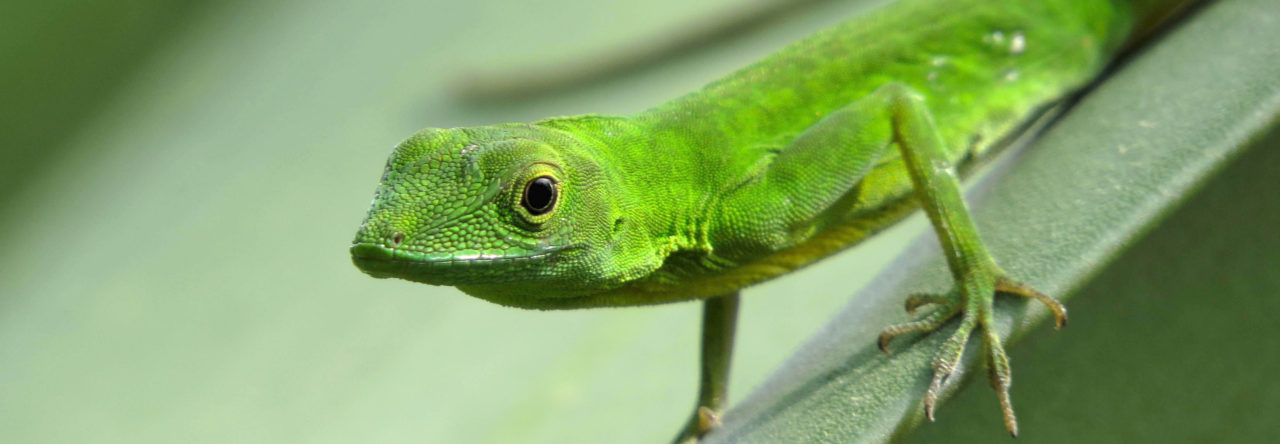This photo is a treat from tweet-o-sphere, posted by Miguel Angel Zapata, who did not respond to my request for more information. And that’s really all I’ve got to say. Anolis taylori is a relatively little-known anole from southern Guerrero, Mexico. As far as I’m aware, there’s only been one paper written on this species, by Fitch and Henderson in the Journal of Herpetology in 1976 (and this paper, in turn, has only been cited five times). The species apparently is usually round in boulder piles, on the sides of rocks, as well as on rocks and trees. Does anyone know any more about this species?
Here’s the abstract to that paper, which also concerned Anolis gadovii:
Anolis gadovii and Anolis taylori are medium-large, saxicolous anoles of southern Guerrero, Mexico. The first named species is confined to a small area near Tierra Colorada, about 50 km inland, the second is limited to the immediate Coast Range in the vicinity of Acapulco. For both the habitat is on steep, wooded slopes with piles of large, loose boulders. Compared with other anoles, these are relatively stenothermic and tolerant of high temperatures, with a preferendum between 29 and 30 (at least for A. taylori). The habitat of A. gadovii, especially, is xeric, and during the dry season the anoles tend to stay deep in the rocks where temperature remains low and humidity is high. In both species reproduction is suspended during the drier part of the year and by the beginning of the rainy season in July the population consists essentially of adults. In areas of favorable habitat with high population density of A. taylori many home ranges were found to overlap. Favorite perches and look-outs were used by a succession of individuals with frequent territorial contests. Males of A. gadovii and A. taylori are about the same size, females of A. gadovii are somewhat smaller, and females of A. taylori are markedly smaller. Anolis dunni, a non-saxicolous species living at somewhat higher altitude, is like A. taylori in many of its characters, and is annectent to other montane species.
- Evolution in Real Time on Lizard Island - March 23, 2025
- Spider Snags Adult Anolis osa - March 22, 2025
- An Homage to the Green Anoles of New Orleans - March 21, 2025



Ambika Kamath
Now that is decent competition for a Sitana dewlap.
Peter Mudde
yes.. They have a more or less similar habitat, haven’t they? Is the ecomorph- also an dewlap-ecomorph? (Is dewlapsize bound to ecological circumstances?)
Ambika Kamath
Ooh I do like that! Anolis onca’s dewlap is equally impressive, it seems (https://www.anoleannals.org/2012/01/16/some-anoles-from-venezuela/).
Dewlap size appears not to be related to ecomorph in the Caribbean anoles (Losos and Chu 1998, Nicholson et al 2007), but perhaps the more extreme habitat these anoles/agamids inhabit drives dewlap size to a greater degree.